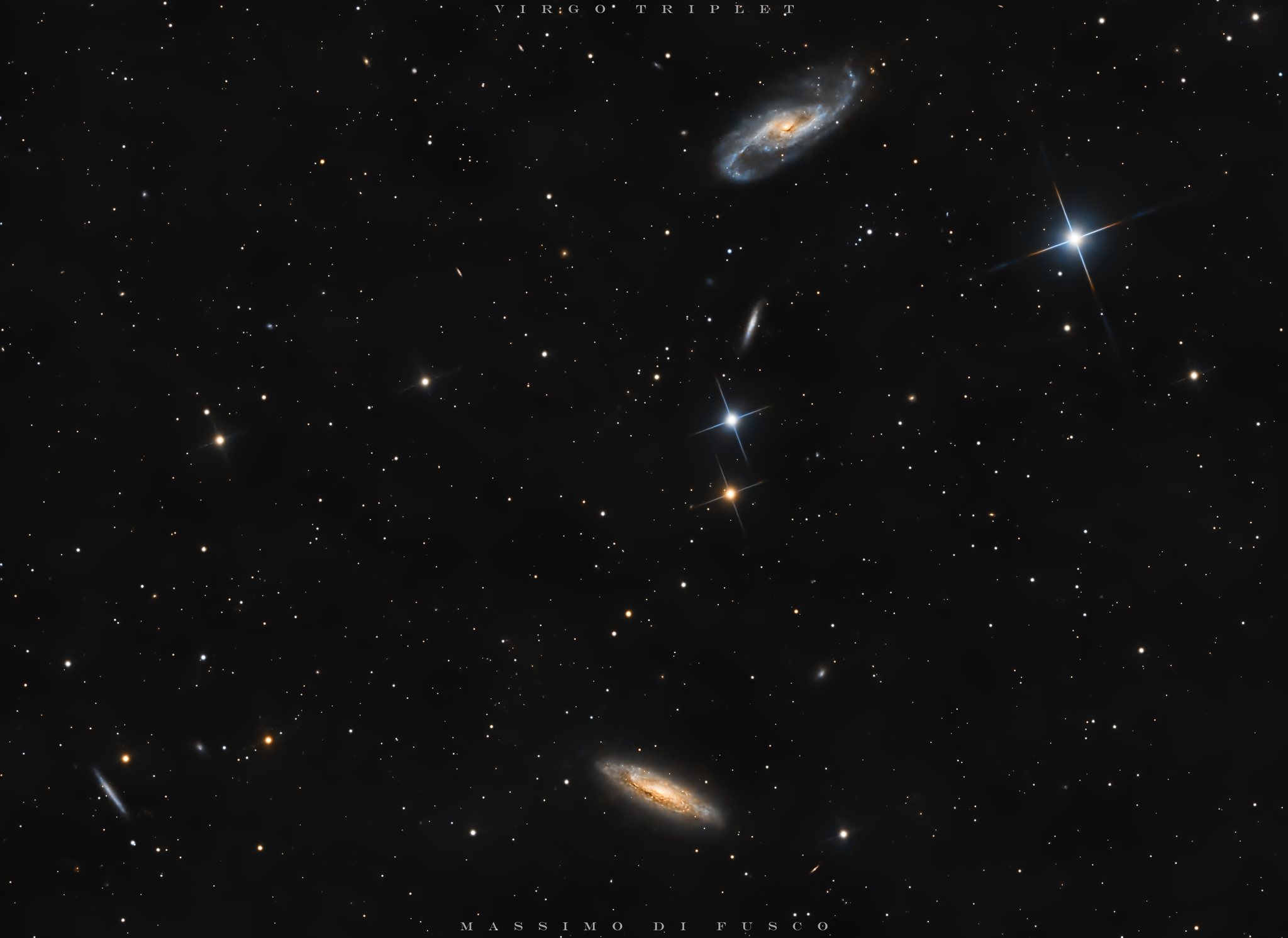NGC 4536 + Massimo Di Fusco + L-QEF (L-Quad Enhance Filter)
NGC 4536
Credit: Massimo Di Fusco (Italy)
Filters: Optolong L-QEF (L-Quad Enhance Filter)
The world of astronomical photography always holds many surprises. In fact, this photo was born purely by chance because I needed a subject in that area of the sky to be able to shoot continuously all night long without the telescope bumping into the mount (I don't do meridian flips at night otherwise I wake up the whole neighbourhood :)). After the stack, I was presented with this marvel which, in fact, is a Virgo triplet, formed by the galaxies NGC 4536, NGC 4533 and NGC 4527 surrounded by a few bright stars.
NGC 4536 (top) was first discovered by William Herschel in 1784. Located about 50 million light years away in the constellation Virgo, NGC 4536 is not part of the main Virgo group of galaxies, but is part of the Virgo II subgroup, in this case part of the group containing M61. NGC 4536 appears to undergo some form of starburst, although there is no obvious interacting galaxy.
In the centre, just below NGC 4536, is the cut-off galaxy NGC 4533 shining at magnitude 13.8 that was discovered by Tempel in 1877.
Below is the bright spiral galaxy NGC 4527, also discovered by William Herschel on 23 February 1784.
There are many other distant galaxies in the frame, the most obvious of which is IC 3474 located about 100 million light years away from us (I put the image noted in the first comment).
Konus 200/1000 @950mm, f/4.8
Player One Poseidon-C camera @-5 °C
Sky-Watcher Eq6r Pro mount
Optolong L-Quad Enhance filter 327x180"
N.I.N.A., APP, PixInsight, PS
Ferrara (Italy)
Hope you like it.





